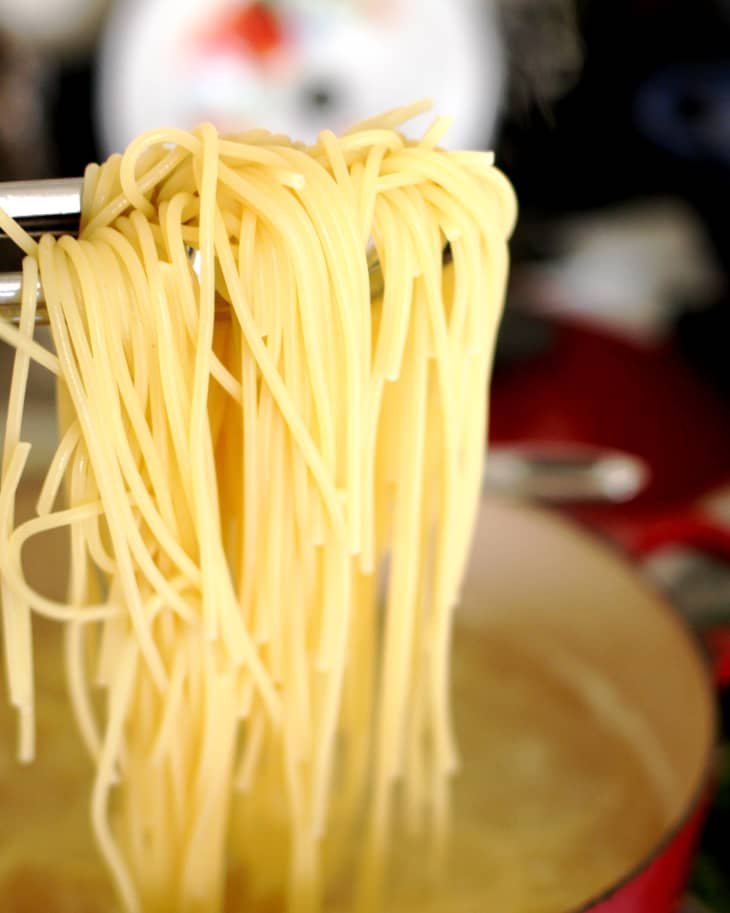7 Myths About Cooking Pasta That Need to Go Away!
There are many myths about cooking pasta that simply aren’t correct and yet they persist. Read on for a few that we would like to see disappear!
1. Fresh pasta is superior.
While it’s true that many things are better when they’re fresh, pasta isn’t one of them. Fresh pasta isn’t superior to dried pasta, it’s just different. Fresh pasta has a silkier, softer texture and should be used with sauces that complement it. Obviously you will need fresh pasta to make ravioli and the like. I also use it to make lasagne because I don’t have to precook it.
- Learn more about the differences: Dry Pasta vs. Fresh Pasta: What’s the Difference?
2. Add oil to the water.
Don’t add oil to the pasta water. It will only make your pasta slippery, causing the sauce to run off.
3. Drain the pasta well.
Don’t drain every last bit of water off the pasta. A little water is often good for the sauce and sometimes you will even want to add more (see “saving a scoop of water” in this post).
4. Rinse the pasta.
Don’t rinse the pasta! Unless you’re planing on using your pasta for a cold pasta salad, don’t rinse it after draining! (If you are using it for a salad, it is a good idea to give it a quick rinse to wash away any residual starch which will make it gummy and then toss it with a touch of olive oil to keep it from sticking.)
5. The water must be boiling.
Don’t be concerned about keeping your pasta at a full rolling boil all the time. In fact, one of my favorite new methods for cooking pasta is to add the pasta to boiling water, stir, bring it back up to the boil, turn off the heat, and cover the pot. The pasta will cook in the same amount of time and to the same texture as it would have if it cooked at a full boil. True!
6. If it sticks to the wall, it’s done.
Don’t throw your strand of spaghetti onto the wall to see if it is done. It’s not a good indicator and you’ll just have to clean your wall. The best way to tell is to just bite into a piece.
7. All pasta and sauces are interchangeable.
Most Americans will toss together any shape of pasta with a jar of red sauce. Most Italians will not. Certain pasta shapes lend themselves to certain kinds of sauces. The weight, texture, and size of the pasta should complement the sauce. This chart from Chow is a handy guide.
- Learn more about buying pasta: 4 Helpful Hints for Choosing Great Pasta at the Grocery Store
What are some myths about cooking pasta that you would like to see disappear?
Updated from a post originally published January 2014.
